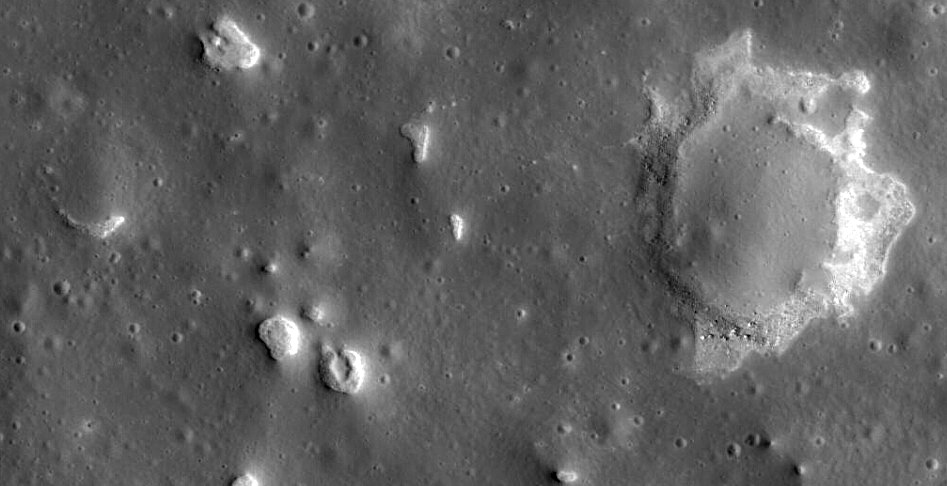Difference between revisions of "March 20, 2010"
| Line 16: | Line 16: | ||
<hr /> | <hr /> | ||
| + | <table class="wiki_table"> | ||
| + | <tr> | ||
| + | <td><!-- ws:start:WikiTextMediaRule:0:<img src="http://www.wikispaces.com/site/embedthumbnail/custom/5672913?h=0&w=0" class="WikiMedia WikiMediaCustom" id="wikitext@@media@@type=&quot;custom&quot; key=&quot;5672913&quot;" title="Custom Media"/> --><div style="text-align:center;margin:0px;padding:0px;width:280px;"><embed src="http://ra.revolvermaps.com/f/r.swf" type="application/x-shockwave-flash" pluginspage="http://www.macromedia.com/go/getflashplayer" quality="high" wmode="window" allowscriptaccess="always" allownetworking="all" width="280" height="280" flashvars="m=8&nostars=false&recenthits=true&i=07jzuG9zX2e&counter=true&color=ff0000&bg=000000&size=280" /><br /> | ||
Revision as of 19:22, 2 January 2015
Another Ina?
LROC Observation M104476560L from LROC WMS Image Map (illumination from the left)
The peculiar depression Ina has a bizarre floor of rubbly hills and islands of smooth terrain. Sorting through the LRO images released on March 15 I found this image of part of the floor of Hyginus crater that looks similar. The largest roughly circular feature is 350-400 m wide, but it is not clear what the feature is. Smaller circular to irregular depressions are across the scene. The arcuate depression on the left looks like it continues as a circular feature covered by the darker material. But if Hyginus is like Ina, the dark smooth material is as old as maria outside Hyginus, suggesting that it is not a younger deposit. Thus, it seems that something is removing the terrain under the original mare surface. Like Ina, Hyginus is thought to be a volcanic collapse depression. Perhaps volcanic gases dissolve the regolith in volcanic craters causing this characteristic pattern. But what gas would do this? Comparison with the 43 year old Orbiter V image reveals no obvious changes so the process does not appear to be active on a human timescale.
Chuck Wood
Related Links
Rükl plate 34
Note that Pete Schultz and colleagues included Hyginus as an Ina-like object in their 2006 paper.
<embed src="http://ra.revolvermaps.com/f/r.swf" type="application/x-shockwave-flash" pluginspage="http://www.macromedia.com/go/getflashplayer" quality="high" wmode="window" allowscriptaccess="always" allownetworking="all" width="280" height="280" flashvars="m=8&nostars=false&recenthits=true&i=07jzuG9zX2e&counter=true&color=ff0000&bg=000000&size=280" />
COMMENTS?Click on this icon File:PostIcon.jpg at the upper right to post a comment. |




